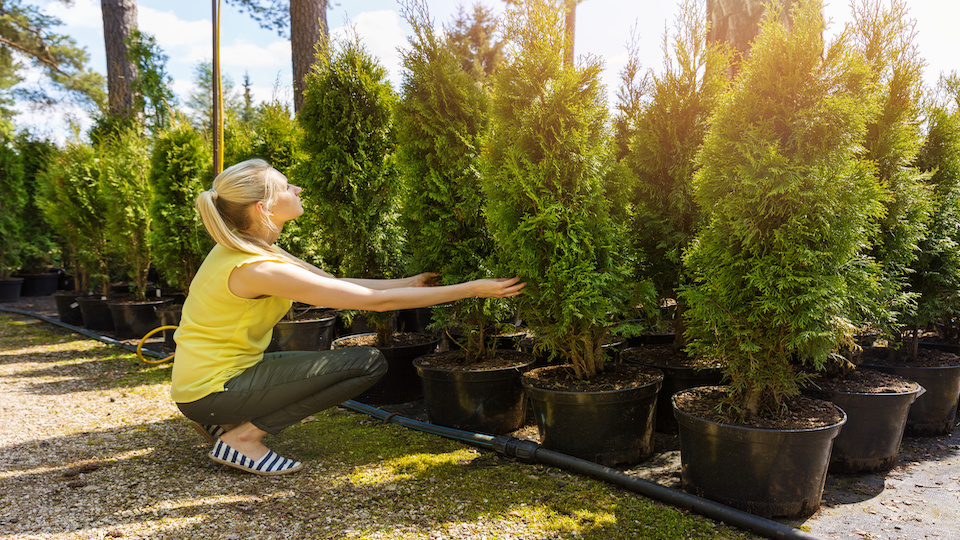If only it were as easy as purchasing the perfect tree, digging a hole and waiting for your tree to take root and come to life. In fact, there are more technicalities to purchasing and planting a tree than most people understand.
Here are a few essential tips for tree shopping that will help you choose the best tree for you.
Find the location, find the tree
There are so many beautiful trees out there, but you can’t have them all. Rather than trying to find the ideal location for a selected tree, try to source a tree that’s suitable for a given location. The purpose of having a tree in that particular spot is another important factor; whether it is wanted for providing privacy or shade, or to act as a windbreak.
A large evergreen close to your home on the northern side can act as a windbreak in winter and help cut down your heating expenses, but the same in the south would block what little sun you get to warm you up during the cold season. Deciduous trees have the advantage of providing shade in summer when you need it most, while conveniently shedding all their leaves in fall, leaving nothing but a skeleton of bare branches, so that you get as much winter sun as possible. Pure aesthetics also can be a consideration in selecting a tree for a spot, if its main purpose is to enhance the view from the street or from the house.
Size does matter
What size tree you should buy depends on the space you have. Young saplings are deceptively small and spindly, so don’t buy them from the nursery before doing your homework. You should have a very good idea about their size at maturity; it’s such a waste of time and energy trying to keep a large tree within limits by frequent pruning.
Tall majestic trees like pines, oaks, and walnuts can add character to the property, but they can be a safety hazard when planted too close to the home. Away from the home, make sure that they won’t cause problems for utility lines.
Medium-sized trees like flowering pear, Eastern red cedar, hemlock, green ash and usually present their crowns at the height of a two-story house when viewed from a little distance, so they’re excellent for providing privacy. But their heavy shade and spread should be taken into account.
Smaller trees, especially flowering trees such as redbud, hawthorn, flowering plums and dogwood and those with interesting fall color, are grown for their seasonal appeal. They can be squeezed into smaller yards since they take very little real estate.
Let the shape match the landscape
Give some thought to the natural shape of the tree and see whether it compliments your landscape as well as the architecture of your house. Trees with neat globular or pyramidal shapes are ideal for formal settings. Narrow columnar trees don’t take up much space; placed next to the house they can effectively guide your eyes upward to its elegant features. When planted in a straight line on both sides of a walkway, they look very formal. They are also excellent for making a privacy screen.
Trees with irregular and open crowns look good in more informal landscapes. Smoke tree, crab apples, some flowering cherries, dogwoods, and the silk mimosa tree are typical examples. The weeping habit of some trees such as willows, weeping cherries, Eastern white pine, and copper beech are good choices for softening the rigid lines in the background. They make excellent focal points in the landscape since they easily grab your attention.
Don’t skimp on quality
Think of a tree as a lifetime investment. Once you identify the right tree for a location, the next agenda is scouting for the best specimen available. Check out the local nurseries first so that you can see exactly what you’re getting. You’re in luck if they have large balled and burlap-wrapped stock of the tree you want. Make sure that the soil ball is firm to touch and securely tied to the trunk. Check the point where the trunk meets the roots. It should ideally have strong roots fanning out in all directions rather than circling around at the top.
Next choice is potted saplings, but they should not be too old and root bound in the small pots they come in. You can probably check this by gently easing the plant out of the pot. If bare-root seedlings are your only option, choose the ones with a few strong roots that give off numerous small roots.
Stayed tuned for how to plant a tree!
-Susan Patterson




